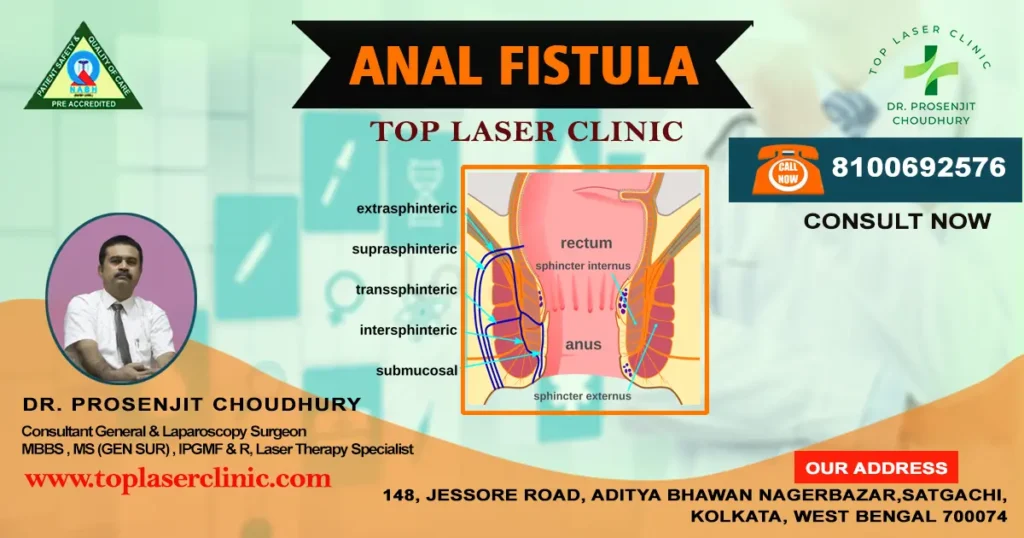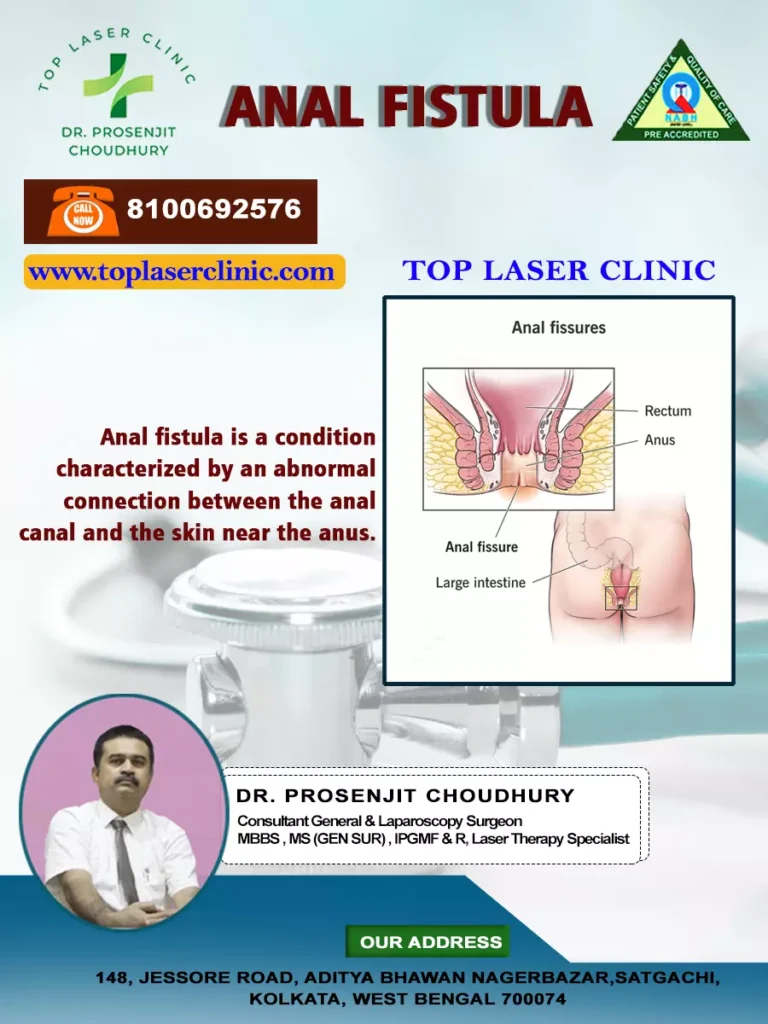
Anal fistula is a condition characterized by an abnormal connection between the anal canal and the skin near the anus. This connection forms a tunnel, which can cause pain, discomfort, and chronic discharge. It typically develops as a result of an infection or inflammation in the anal glands.
Anal fistula can be caused by various factors, including infections, abscesses, inflammatory bowel disease, and trauma to the anal area. Unfortunately, anal fistula influences patients’ quality of life significantly by causing pain, hygienic problems, and constant perianal inflammation.

Here’s how an anal fistula usually forms:
1. Abscess Formation: The anal glands, located just inside the anus, can become blocked, leading to the accumulation of pus and bacteria. This collection of infected material forms an abscess.
2. Abscess Drainage: If the abscess is not treated promptly, it may eventually rupture and drain, leading to temporary relief from pain. However, this drainage may create a tunnel or channel between the inside of the anus and the skin around the anus.
3. Fistula Formation: The channel that forms between the anus and the skin is called an anal fistula. This passageway may persist even after the abscess has drained, resulting in ongoing issues.
Symptoms of anal fistula
Symptoms of an anal fistula may include:
– Pain and discomfort around the anus, particularly during bowel movements.
– Pus or blood discharge from an opening near the anus.
– Itching and irritation around the anus.
– Recurring abscesses.

Treatment
Treatment for anal fistulas typically involves surgery. The main intention of surgical treatment for anal fistula is to close the internal fistula opening and to preserve anorectal function. Unfortunately, the treatment of complex anal fistulas can be challenging.
Dissection of the fistula track can result in division of sufficient sphincter to cause a disturbance of continence, leading to potential incontinence issues.
There are various surgical techniques available, and the choice of procedure depends on the location, complexity, and extent of the fistula. Therefore, the approach to treating anal fistulas should carefully consider both closing the fistula and preserving anal sphincter function to minimize the risk of in continence.
Mordern techniques of treatment
Despite advances in surgical techniques and novel technologies, the treatment of complex anal fistulas remains a conundrum for surgeons. The incidence of anal fistula is relatively low, with an estimated rate of 2 per 10,000 individuals per year. The exact prevalence of anal fistula is not truly known.
Currently, the most common techniques used for the treatment of anal fistula include fistulotomy, with or without sphincter repair; seton insertion fistulectomy, with or without advancement flap; or insertion of an anal fistula plug.